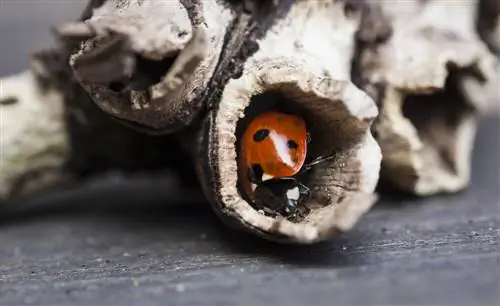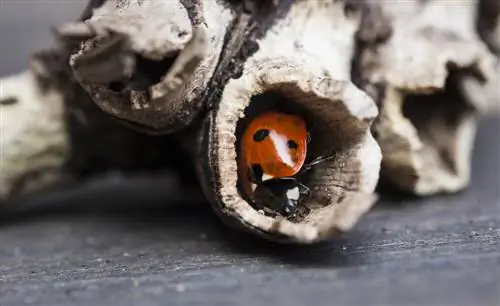- Author admin [email protected].
- Public 2024-01-05 20:48.
- Last modified 2025-01-23 11:22.
What do ladybugs actually do to survive the cold season? This varies surprisingly depending on the species. What is particularly interesting is that some species show behavioral similarities to migratory birds that are unusual for insects.

How do ladybugs overwinter?
Ladybirds spend the winter primarily as hibernators in moist hiding places protected from the wind. However, some species migrate to warmer southern areas or even colder northern areas to hibernate.
Winter rigidity, hibernation or migratory bird behavior
In general, ladybirds overwinter as fully formed beetles, i.e. as imago, and not as larvae like other insects. Of the many different species of ladybirds, 3 groups can be distinguished with different overwintering methods:
1. The Hibernation Group
2. The migratory migrants to the south3. The migrants to the north
Winter sleepers
Most species of ladybirds that occur here stay with us in winter and fall into hibernation or hibernation. To do this, look for damp places protected from the wind, such as piles of leaves, cracks in the wall or moss beds. At temperatures below 12°C, the cold-blooded beetle's body begins to enter hibernation mode. Body functions such as heartbeat and breathing slow down and the body temperature drops to around 5°C. From freezing point onwards, an even more economical body mode occurs, hibernation. This reduces body functions and body temperature to 3-5% compared to active mode.
Migrants heading south
Other species of ladybirds head to southern climes to overwinter like migratory birds. Just like the feathered animals, they gather in large flocks and usually fly along the coasts in search of the warmer climate. Ladybugs that migrate south rely on sufficiently warm temperatures in winter because their organisms cannot adapt to the cold through low-temperature mode.
Migrants heading north
Funnily enough, other ladybugs migrate to even colder countries than ours in the winter. This is because in order to survive, they need winter rigidity and therefore reliable, continuous temperatures below zero. Hibernation mode would wake them up too often, which in turn would lead to life-threatening energy consumption.






